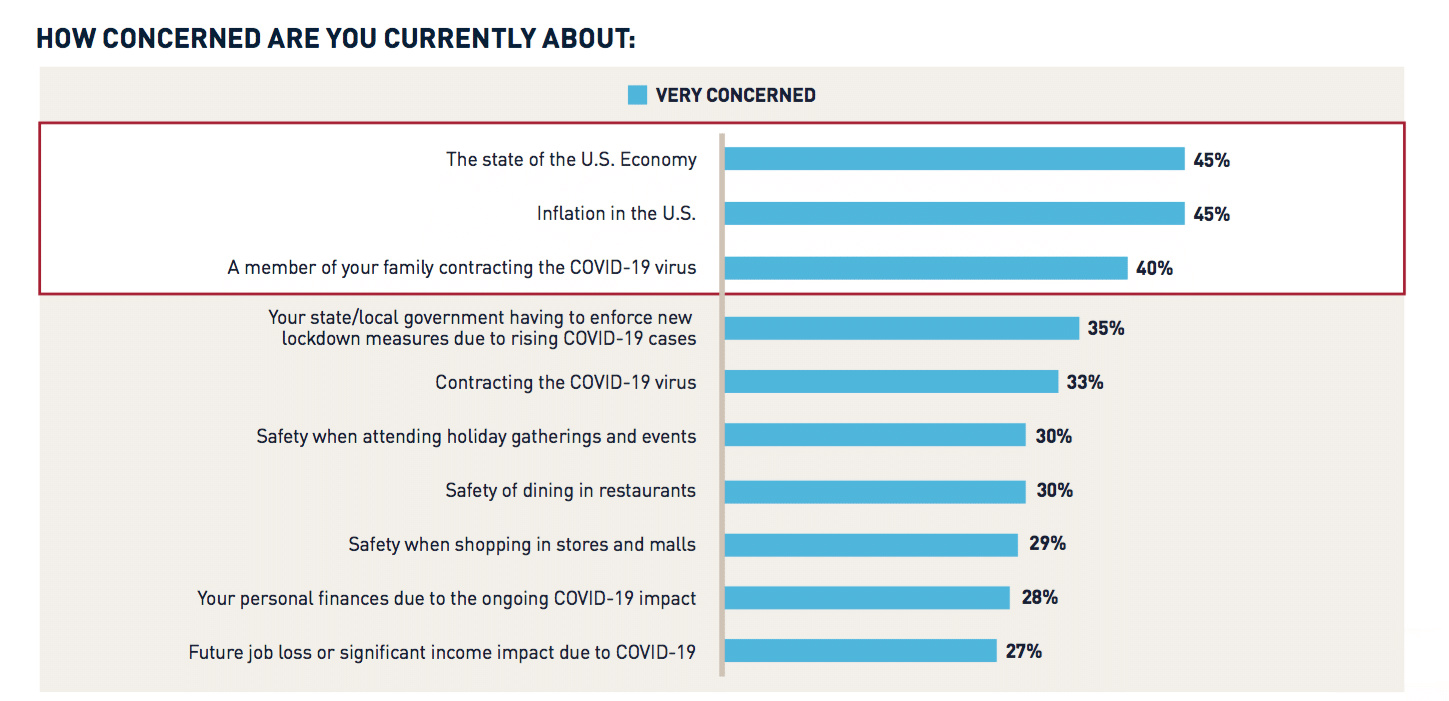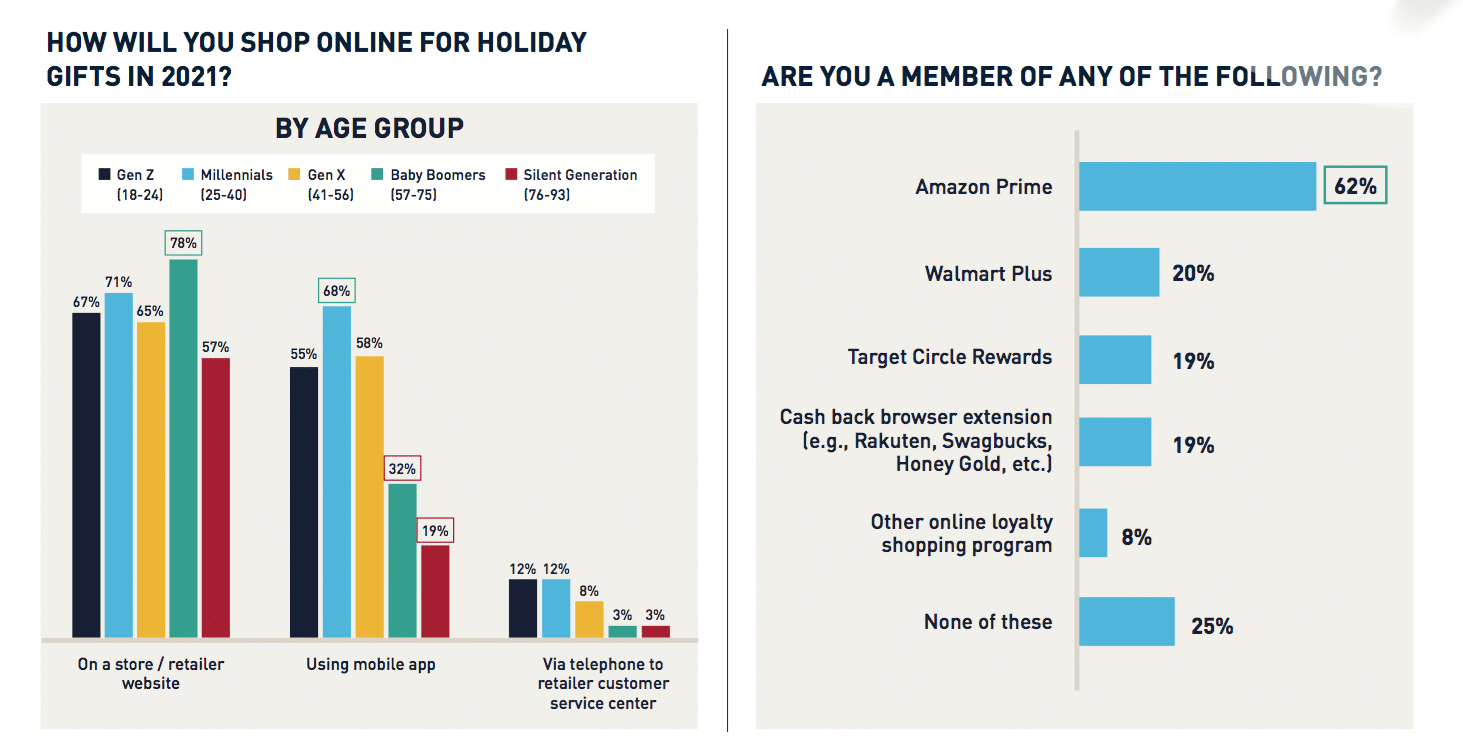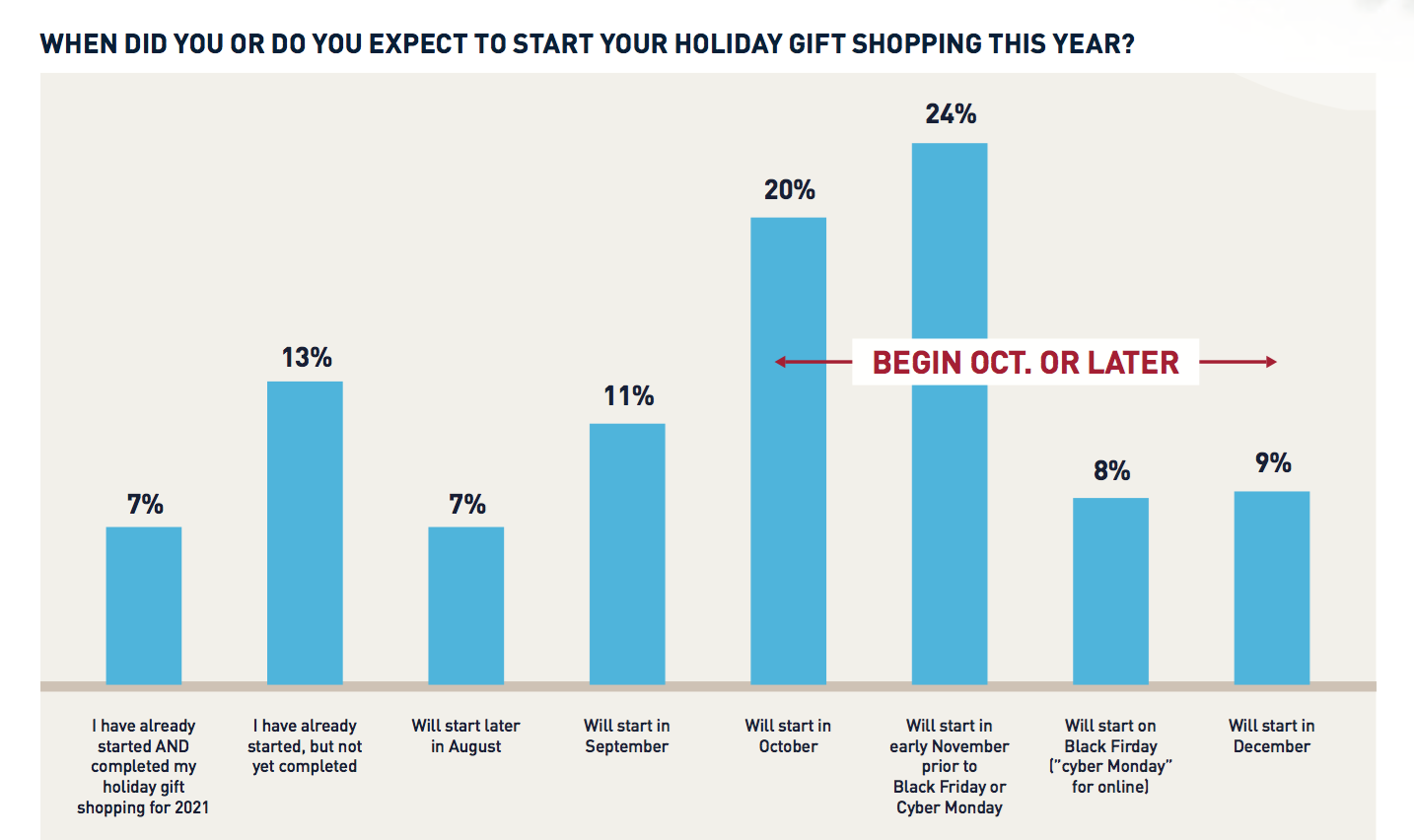With the criticality of the upcoming holiday season, and the many challenges brands and retailers face with emerging post-COVID consumers, global consulting firm Berkeley Research Group (BRG) released new survey results taking the pulse on consumer holiday shopping behaviors—which assert that retailers must continue to be nimble this holiday shopping season as they grapple with headwinds from rising COVID rates, consumer concerns regarding the economy and persistent supply chain issues.
The research decisively found that inflation and reductions and eliminations of government assistance, such as renter’s protection, have begun to impact personal spending power. Of the respondents, 45 percent are very concerned about the state of the U.S. economy and inflation. Likewise, 40 percent of respondents are very concerned about a family member catching COVID, and 59 percent are very or somewhat concerned about COVID disrupting holiday celebration plans.
“As COVID rates went down in the early summer, sales and foot traffic increased in lockstep. Unfortunately, the hope that we may return to a ‘pre-COVID’ retail environment by the holidays looks to be short-lived,” said Keith Jelinek, a managing director at BRG, in a news release. “Rising inflation and a stark increase in COVID cases coast-to-coast caused consumer sentiment to nosedive in August.”
Retailers will need to be creative in finding ways to bring customers to their stores and websites this holiday season
This is made only more difficult by supply chain challenges limiting the selection of popular items. Retailers likely will reduce the depth of promotional discounts. And, as consumer fears of shopping in-store rise, retailers will be challenged to deliver an omnichannel experience that allows shoppers to shop when, where and how they feel most comfortable. Underscoring that point is the that study found nearly 60 percent of consumers plan to use a mix of online and in-person shopping, with only 13 percent planning to shop entirely in physical stores and 24 percent shopping entirely online. Consumers will use both retailer websites (71 percent) and mobile apps (51 percent) when shopping online.
It also will be critical for retailers to understand how different demographics plan on shopping
For example, millennials are more likely to use mobile apps, while baby boomers tend to shop directly on retailer websites. Understanding these nuances and how to reach different consumer segments will be critical to getting the equation right when it comes to enticing holiday shoppers.
“Another big hurdle facing retailers this holiday season involves the persistent supply chain issues that are wreaking havoc on inventories,” said Darren Morrison, a managing director at BRG, in the release. “We don’t see these problems easing up before the holidays, so retailers will need to be creative in how they attract shoppers given the strain on popular items.”
To counter supply chain obstacles, retailers should be prepared to market and sell gift cards, which according to the research are on 50 percent of consumer shopping lists.
“The keys to success for retailers will be preparing stores and digital channels, keeping key items—and alternatives—in stock, offering compelling promotions and managing orders alongside persistent shipping issues due to FedEx and UPS capacity constraints and surcharges,” added Rick Maicki, a managing director at BRG, in the release.







